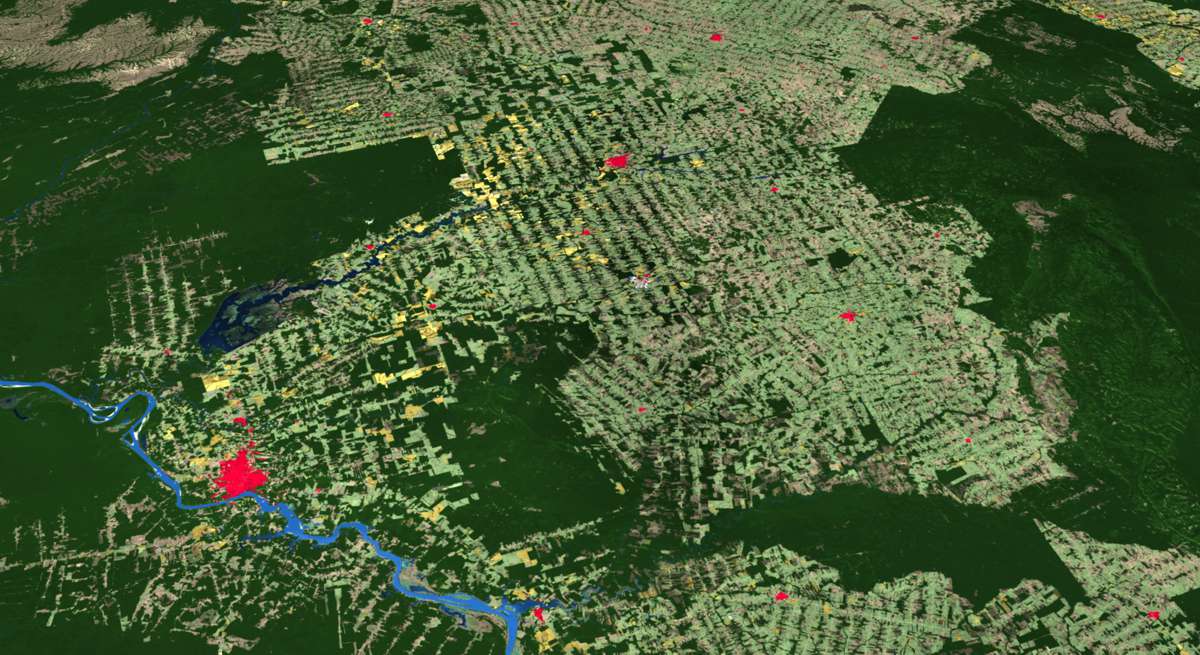Esri releases new Global Land Cover Map
Esri, a global leader in location intelligence, today announced it is releasing for the first time ever a new high-resolution, 2020 global land cover map as part of the company’s Living Atlas.
The map was built using European Space Agency (ESA) Sentinel-2 satellite imagery, and developed using a new machine learning workflow teaming with new Esri Silver Partner Impact Observatory, as well as long-time partner Microsoft.
The new map will be updated annually supporting change detection and highlighting planetary land changes, especially related to the effects of human activity. A consistent map of land cover for the entire world based on the most current satellite information, the 2020 Global Land Cover Map can be combined with other data layers for green infrastructure, sustainability projects, and other conservation efforts that require a holistic picture of both the human and natural footprint on the planet. Later this year, Esri and Impact Observatory will make this new land cover model available to support on-demand land cover classification, allowing the GIS community to create maps for project areas as often as every week.
“This is a critical year for climate action,” said Jack Dangermond, Esri founder and president. “With the UN Climate Change Conference of the Parties (COP26) bringing international parties together to address a set of common goals, we are happy to do our part in making this map available to users that are working towards the health of our planet.”
Users will also be able to manipulate the map in association with other GIS layers such as terrain, hydrology, and more, all available in ArcGIS Living Atlas of the World, the foremost collection of geographic information from around the globe, including maps, apps, and data layers. Through the visualizations being released, planners worldwide will better understand the geography around them to make more informed decisions—enabling them to gain insight into locations with distinctive land cover, as well as human activity affecting them.
High-resolution, open, accurate, comparable, and timely land cover maps are critical for decision-makers in many industry sectors and developing nations. These maps improve understanding of important topics such as food security, land use planning, hydrology modelling, and resource management planning. In addition, national government resource agencies use land cover as a basis for understanding trends in natural capital, which helps define land planning priorities and is the basis of budget allocations.
Impact Observatory, contracted by Esri, developed a deep learning AI land classification model using a massive training dataset of billions of human-labelled image pixels, and applied this model to the Sentinel-2 2020 scene collection, processing over 400,000 Earth observations to produce the map. The unique machine learning approach used to create this global map will soon be available on demand, supporting land managers who need to monitor change in a specific area of interest, looking at annual change and seasonal differences in land cover.
“Global efforts are urging world leaders to set and achieve ambitious conservation targets,” said Steve Brumby, Impact Observatory co-founder and CEO. “With support from the geospatial experts at Esri, and access to incredible compute resources at Microsoft, we were able to build in record time a land cover map that provides leaders in governments, NGOs, and across industries with a novel, timely view of the planet, and a new AI-powered capability for actionable, science-based insights on demand. In doing so, Impact Observatory hopes to contribute towards the global conservation effort.”
Esri is releasing this valuable resource under a Creative Commons license to encourage broad adoption and ensure equitable access for planners creating a more sustainable planet. This content will be made available in ArcGIS Online as a map service and be freely available for use by its 10 million users.




















